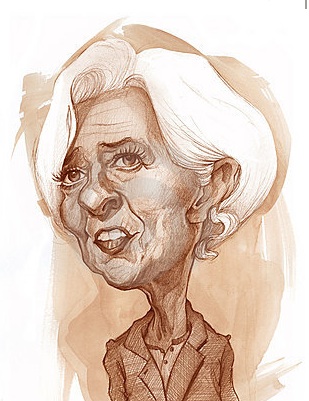Raghuram Rajan. Governor of the Reserve Bank of India, writes: Our world is facing an increasingly dangerous situation. Both advanced and emerging economies need to grow in order to ease domestic political tensions. And yet few are. If governments respond by enacting policies that divert growth from other countries, this “beggar my neighbor” tactic will simply foster instability elsewhere. What we need, therefore, are new rules of the game.
Why is it proving to be so hard to restore pre-Great Recession growth rates? The boom preceding the global financial crisis of 2008 left advanced economies with an overhang of growth-inhibiting debt. Structural factors like population aging and low productivity growth – which were previously masked by debt-fueled demand – may be hampering the recovery.
Politicians know that structural reforms – to increase competition, foster innovation, and drive institutional change – are the way to tackle structural impediments to growth. But they know that, while the pain from reform is immediate, gains are typically delayed and their beneficiaries uncertain.
Central bankers face a different problem: inflation that is flirting with the lower bound of their mandate. With interest rates already very low, advanced economies’ central bankers know that they must go beyond ordinary monetary policy – or lose credibility on inflation. They feel that they cannot claim to be out of tools. If all else fails, a ‘helicopter drop, where the central bank prints money and sprays it on the streets to create inflation.
Monetary policy works by influencing public expectations. If an ever more aggressive policy convinces the public that calamity is around the corner, households may save rather than spend. Conversely, if people were convinced that policies would never change, they might splurge again on assets and take on excessive debt, helping the central bank achieve its objectives in the short run. But policy inevitably changes, and the shifts in asset prices would create enormous dislocation.
Beyond the domestic impacts, all monetary policies have external “spillover” effects. If a country reduces domestic interest rates to boost domestic consumption and investment, its exchange rate depreciates, too, helping exports.
Central banks in developed countries find all sorts of ways to justify their policies, without acknowledging the unmentionable – that the exchange rate may be the primary channel of transmission.
If a policy has positive effects on both home and foreign countries, it would definitely be green. A policy could also be green if it jump-starts the home economy with only temporary negative spillovers for the foreign economy (the policy will still be good for the foreign economy by eventually boosting the home economy’s demand for imports).
An example of a red policy would be when unconventional monetary policies do little to boost a country’s domestic demand – but lead to large capital outflows that provoke asset-price bubbles in emerging markets.
There will be plenty of gray areas (or orange, to stick to the analogy). A policy that has large positive effects for a big economy might have small negative effects for the rest of the world and yet still be positive overall for global welfare. Such a policy would be permissible for some time, but not on a sustained basis.
Can we reach a new international agreement along the lines of Bretton Woods, and some reinterpretation of the mandates of internationally influential central banks.
The international community has a choice. We can pretend all is well with the global monetary non-system and hope that nothing goes spectacularly wrong. Or we can start building a system fit for the integrated world of the twenty-first century.


